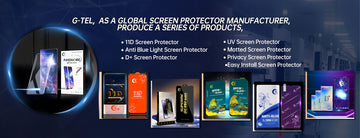Exploring the Quality of Tempered Glass Screen Protectors: An In-Depth Look at Materials, Design, and Manufacturing Techniques
Exploring the Quality of Tempered Glass Screen Protectors: An In-Depth Look at Materials, Design, and Manufacturing Techniques
When choosing a tempered glass screen protector for your phone, the quality and performance of the protector depend on several important factors. These include the type of glass used, the thickness and design of the base layer, the manufacturing process, and the curvature of the protector. In this article, we will explore these key aspects to understand how they impact the quality and functionality of a tempered glass protector, providing you with all the necessary insights to make an informed decision.
1. Type of Glass: High Alumina vs. Mid-Alumina Glass
The type of glass used in manufacturing a tempered glass screen protector plays a significant role in determining the overall quality and durability of the product. Two common types of glass used are high alumina glass and mid-alumina glass.
High Alumina Glass
- Composition: High alumina glass typically contains a higher concentration of aluminum oxide (Al₂O₃), which increases the glass's strength and durability. This type of glass is known for its toughness, thermal stability, and resistance to scratches and impact.
- Benefits: High alumina glass is more durable and provides superior protection against drops, cracks, and scratches, making it an ideal choice for phone screen protectors. It also tends to have better optical clarity, allowing for clearer screen displays.
Mid-Alumina Glass
- Composition: Mid-alumina glass has a lower concentration of aluminum oxide compared to high alumina glass, making it somewhat less durable and scratch-resistant.
- Benefits: While mid-alumina glass may not offer the same level of strength as high alumina glass, it is still a cost-effective option for phone screen protectors, offering decent impact resistance and optical clarity at a lower price point.
Ultimately, high alumina glass is preferred in premium tempered glass protectors due to its enhanced durability, scratch resistance, and ability to provide long-lasting protection.
2. Thickness and Design of the Base Layer
The thickness and design of the base layer in a tempered glass protector are critical factors that affect both the level of protection and the user experience.
Thickness of the Base Layer
- Standard Thickness: Most high-quality tempered glass protectors have a thickness between 0.3mm to 0.5mm. This range offers an ideal balance between protection and touch sensitivity.
- Thicker vs. Thinner Layers: A thicker base layer (above 0.5mm) may provide slightly better protection but could impact touch sensitivity and the overall user experience. Thinner protectors (around 0.2mm) maintain higher screen sensitivity but may not offer the same level of impact resistance.
Base Layer Design
- The design of the base layer is also important. Quality screen protectors feature edge-to-edge coverage, ensuring that the protector fits precisely over the entire screen area, including curved edges on some phone models.
3. Manufacturing Techniques: Water Cooling vs. Oil Coating
The manufacturing process of a tempered glass protector involves several steps that impact its final quality, including water cooling and oil coating.
Water Cooling Process
- Description: After the glass is heated to high temperatures during the tempering process, it is rapidly cooled using water cooling. This technique increases the glass's strength by inducing stress on its surface and making it harder and more resistant to damage.
- Benefits: Water cooling produces a stronger glass that can withstand impact and pressure more effectively. This method ensures that the glass retains its toughness while maintaining optical clarity.
Oil Coating (Oleophobic Coating)
- Description: Most high-quality tempered glass protectors are coated with an oleophobic layer, which is an oil-repellent coating that helps reduce fingerprints and smudges on the glass surface.
- Benefits: The oil coating ensures that the screen remains clear and easy to clean, preventing greasy marks from accumulating. It also improves the overall touch experience by making the surface smoother and more responsive.
4. The Curvature of the Screen Protector
The curvature of the tempered glass screen protector plays a significant role in how it fits the phone's screen and protects it. This is especially important for modern smartphones that feature curved edges.
Curved Edge Protectors
- Design: For phones with curved edges, the tempered glass protector must be designed to accommodate these curves while still providing edge-to-edge protection. These 2.5D or 3D curved glass protectors are specifically crafted to follow the natural shape of the phone's screen.
- Benefits: The curvature ensures that the protector offers complete coverage, even on the edges of the screen, without leaving gaps or unprotected areas. This helps to prevent scratches and impact damage along the sides, which are common problem areas on curved screen phones.
Flat Protectors
- For devices with flat screens, a flat tempered glass protector is typically used. These protectors are easier to install and do not require adjustments for curvature, but they may not offer as much protection along the edges of the screen as their curved counterparts.
5. Additional Features and Quality Indicators
In addition to the materials, thickness, and manufacturing processes mentioned above, high-quality tempered glass screen protectors may include additional features that enhance their performance.
Fingerprint and Smudge Resistance
- Oleophobic Coating: A well-applied oleophobic coating reduces the likelihood of fingerprints and oil smudges on the protector’s surface, ensuring that the screen remains clean and easy to use.
High Transparency
- Clarity and Transparency: A good quality protector should maintain 99% transparency to avoid altering the display quality, preserving the sharpness and color vibrancy of the phone’s screen.
Shock Absorption
- Some protectors include shock-absorbing layers designed to distribute impact force, further reducing the likelihood of screen damage during accidental drops.
Conclusion
The quality of a tempered glass screen protector depends on several factors, including the type of glass used, the thickness and design of the base layer, the manufacturing techniques employed (like water cooling and oil coating), and the curvature of the protector. By choosing a protector that excels in these areas, you can ensure that your phone is well-protected from everyday wear and tear, drops, and scratches while maintaining the phone's touch sensitivity, clarity, and overall functionality.
At G-Tel Glass Factory, we pride ourselves on using high-quality high-alumina glass, employing advanced manufacturing techniques, and designing curved edge protectors that fit your phone perfectly. With our premium tempered glass protectors, you can trust that your phone will stay protected, sleek, and functional.


